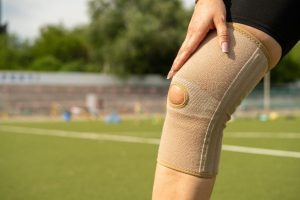Though we’ve been working with patients for over 30 years at this point, we’re not too proud to admit that there are pros and cons to every medical intervention. Read on if you’re weighing the pros and cons of physical therapy versus another potential avenue for rehabilitation:
Physical therapy offers pain relief, improved mobility, and tailored treatment plans, enhancing recovery from injuries while promoting long-term health and independence. Potential drawbacks include time commitments, adherence challenges, and the potential for injuries to feel worse before they feel better.
In this article, we’ll discuss each of physical therapy’s pros and cons, and help you decide whether our approach is right for you!
Pros of physical therapy
Cost savings
As we’ve discussed elsewhere on our site, the cost of physical therapy tends to be lower overall than comparable options, like surgery or medications.
Patients with copays, on average, pay only $25-50 per session, split over 2-3 appointments per week for 4-8 weeks. Even patients with deductibles generally come in lower than their deductible.
Non-invasive approach
Physical therapy’s entire approach is based on helping your body recovery by utilizing targeted exercises and flexibility / mobility exercises to enhance your body’s function.
Patients who make full recoveries are often grateful that they didn’t have to go under the knife, and that they now have the tools to keep themselves healthy over the long haul.
Improved mobility and function
With physical therapy, we’re looking to improve your body’s ability to manage your daily tasks while recovering from whatever specific musculoskeletal injury you may have incurred.
What this means is that we’ve always got our eye on the long-term sustainability of whatever approaches we’re using. This long-term view is a core component of how physical therapy works.
Individualized treatment
Each physical therapy treatment plan is tailored to the individual, with regular check-ins during the week to discuss how it’s going. This is important, as each patient has their own unique medical history, goals, conditions, and lifestyles.
Holistic approach to health
Physical therapy is, by definition, a conservative approach to managing pain, musculoskeletal problems, and chronic conditions. We work to treat the whole person in a non-invasive way (see our article on holistic physical therapy).
Though we will sometimes utilize technologies as modalities to treat pain, the core of our intervention process is therapeutic exercise, manual therapy (hands-on), and mobility / flexibility training.
Injury prevention
One of the best elements of physical therapy is that it sets you up for the greatest chance of success over the long term. This is because you’ll be equipped with the exercises, stretches, and drills we use during the course of treatment to maintain the strength and mobility of your joints for years to come.
In fact, preventative physical therapy can become a way to maintain a pain-free and active lifestyle as you continue to engage in your regular activities.
Every bout of physical therapy comes with a home exercise plan that can be practiced for months or years after the treatment is over. Our goal is that you will maintain your newfound freedom of movement for many years to come!
Cons of physical therapy
As with all things, physical therapy can come with a few downsides. As we’ve noted in our article on what to do if physical therapy doesn’t work, there are often simple fixes we can implement to get you back on track. However, we freely admit that physical therapy isn’t always the best fit for every person in every situation.
Time commitment and availability issues
We harp on consistency with all of our patients. The reason for this is that one of the most surefire ways to derail a physical therapy process is to miss appointments or full weeks.
That said, making appointments 2-3 times per week for 4-6 weeks can be a challenge for some people, especially if your work schedule conflicts with our office hours.
This is perhaps the most obvious downside of physical therapy – in order for it to work, you have to make the appointment schedule work. If this is a struggle for you, please discuss it with your therapist! There are often little tweaks to the program that we can make in order to accommodate busy or unpredictable schedules.
Initial increase in symptoms
The old cliche, “it gets worse before it gets better,” can often apply in physical therapy. Most patients we meet have been avoiding use of a certain limb or bodypart for fear of reinjury or pain. While this can create some relief in the short term, it causes injuries to persist over the long haul.
In physical therapy, we’re gently and deliberately working with the joint or bodypart to get it working again. In some cases, this can mean that the pain or discomfort increases initially.
We find that after the first 1-2 weeks of physical therapy, this is usually not an issue anymore. However, it is something to be aware of if you’re considering physical therapy as a solution to your problem.
Benefits can be slow
Unlike a surgery or medication, physical therapy relies on the body to heal itself, with the help of our exercise programs, manual therapy, and modalities.
This means that recovery during physical therapy is not an overnight matter. Sometimes it can take weeks to begin to feel the positive effects of a physical rehabilitation plan. If you’re interested in learning the specific time frames for your injury, refer to our article on how long it takes for tissue damage to repair.
Also note that if you feel you aren’t making progress, a simple conversation with your therapist can be the solution. We always encourage open communication with our patients – it’s how we know whether our efforts are paying off or not!
High adherence requirement
We mentioned this a bit earlier when we discussed consistency, but we’ll approach it from a different angle here. For physical therapy to work, it will require adherence to a home exercise plan outside of the office, which will require you to do physical therapy at home.
Generally we provide the equipment and guidance necessary, and the program hardly ever takes more than 10 minutes out of your day. However, as we stated above, adherence to this program can truly make or break progress in physical therapy.
Making physical therapy work for you
While we are, of course, believers that physical therapy works for the vast majority of people who give it an earnest shot, there are some cases where it’s not the best fit.
If you’re wondering if physical therapy is for you, be sure to discuss it with your primary care provider, or a local physical therapist if you already know one. These professionals will be sure to provide you with guidance to make an informed decision and lead a happy, healthy life moving forward!

















